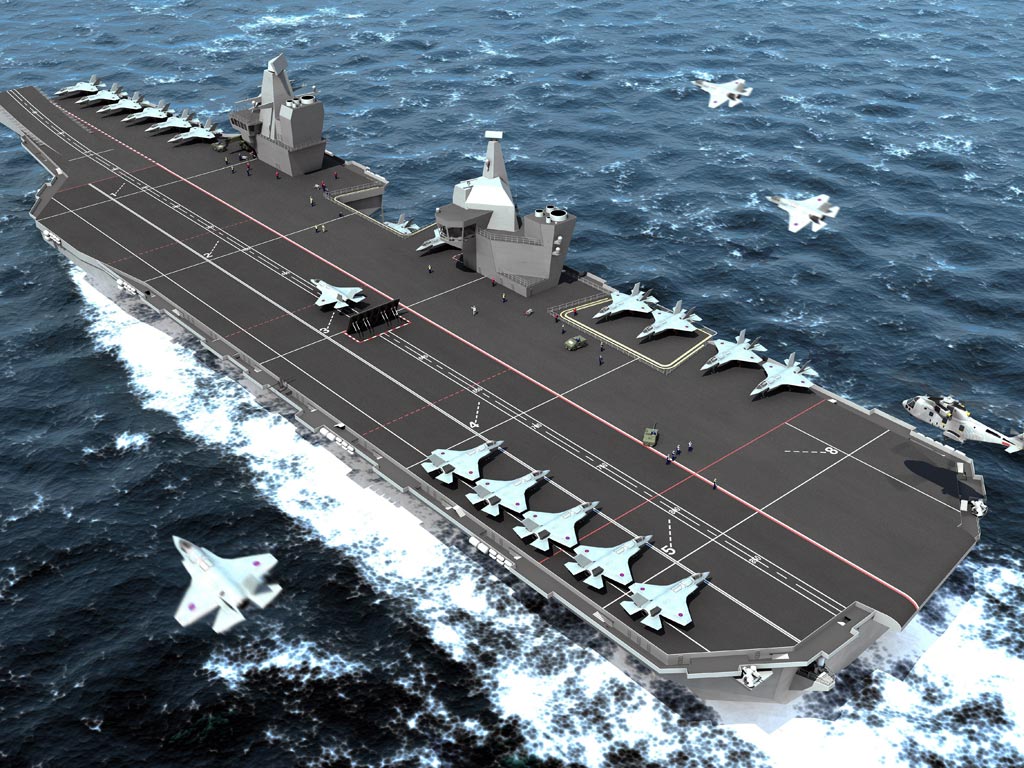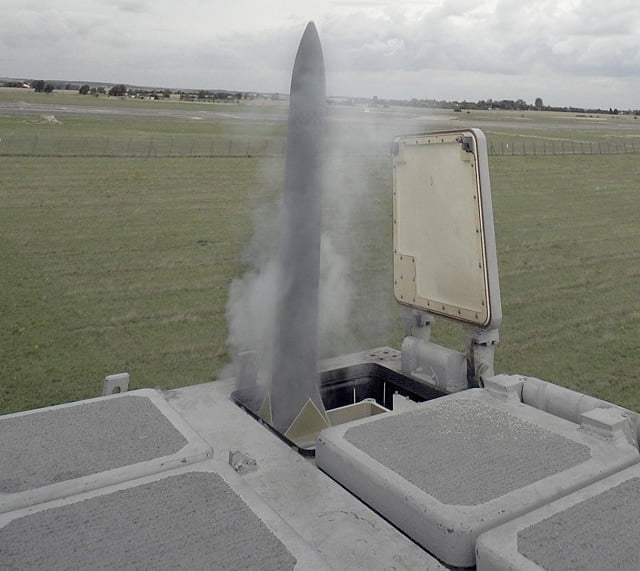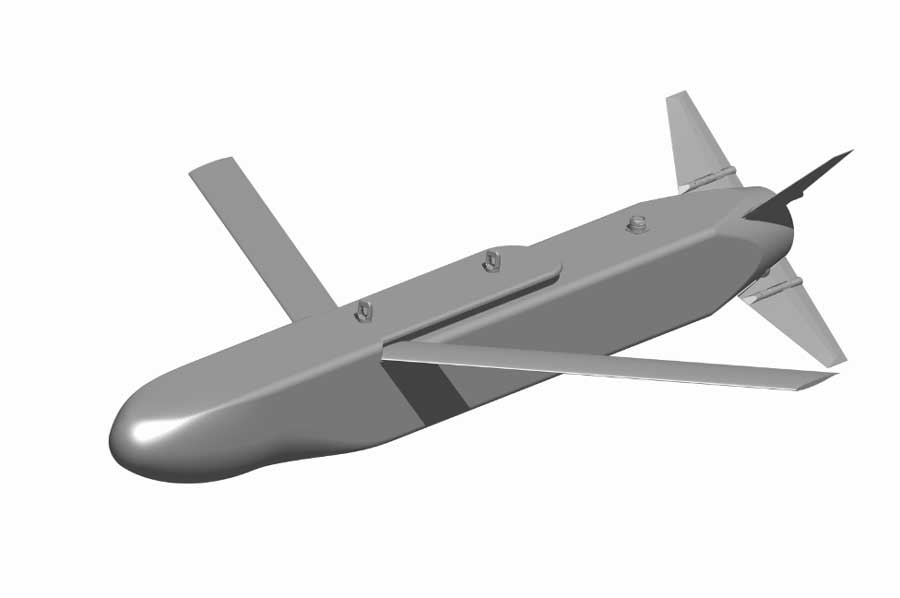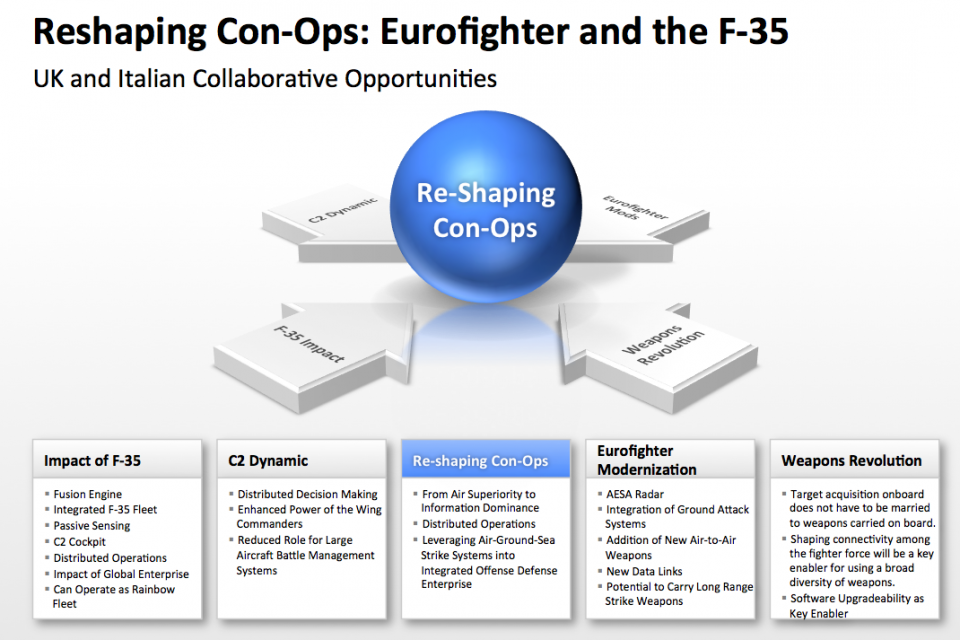2015-05-28 By Robbin Laird
I visited the HMS Queen Elizabeth on March 31, 2015 and conducted interviews in MoD afterwards.
The HMS Queen Elizabeth is a new carrier designed to leverage core 21st century technologies and to reshape the UK forces into a more effective power projection force.
And the full value of the carrier will not be realized until decision makers adjust their thinking as well to the options generated by the new power projection tools emerging for democratic decision makers.
Although this piece has been informed by several discussions with the Royal Navy and Air Force, they are not responsible in any way for my arguments made in this piece, but clearly there is a need to place the carrier in context.
And that context is evolving capabilities and the nature of the strategic context and decision-making approaches enabled by the carrier.
There are two clearly interconnected elements to any argument about the importance of the carrier at this point in history – the first is how it both enables and is enabled by adjacent evolving capabilities to shape an overall dynamic process of enhanced capabilities for the forces and the second is the relevance of this force transformation for UK and allied interests and operations.
Key Building Blocks for Force Transformation
When designing the carrier, clearly the designers were looking at core elements which the carrier would be built around which provide a base line infrastructure for 21st century operations.
A large carrier is first of all to be understood to be a floating infrastructure for operations, and dependent upon what comes from the flight deck of the carrier, it is an infrastructure for variable operations.
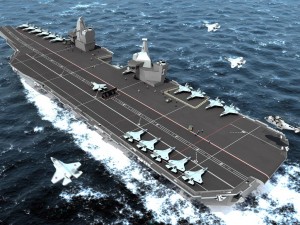
The integrity of the logistics of a carrier and its task force is a key advantage of carrier operations, namely that it, in the words of the CG of 2nd Marine Expeditionary Brigade, Major General Simcock, “it commutes to work.”
Recent events in Iraq whereby the ISIS seized US and allied equipment left behind in Iraq reminds one of the problem of leave behind stores and supplies as opposed to carrying the supplies with you.
A key advantage of a carrier is that it carries its logistics with it and when it leaves those supplies go with it.
The other advantage of a sea-based task force is that the force does not have to have significant supplies ashore to operate, or the creation of significant numbers of forward operating bases or FOBs which in turn must be protected.
The ability to project power ashore is simply limited by the ground forces on board and the nature of the aircraft used to project those forces ashore.
Obviously, if the goal is a large invasion force for occupation or stability operations, this would simply be a forced entry force. But, in a number of cases, this might be all the force one would want, especially when linked with a variety of coalition partners.
The UK carrier will come to its initial operational life as a new phase of building scalable modular insertion forces is unfolding.
The confluence of evolving ISR, C2, and fifth generation capabilities are shaping a new approach to scalable modular force.
Rather than building sequential build to mass air operations, forces which operate in an area of interest will increasingly be linked to other forces to allow for scalability, reachback and mission success by focused lethality rather than overwhelming with mass.
The carrier will operate as this phase of the evolution of airpower is unfolding and accelerating with the emergence of a global fleet of F-35s.
The RAF will focus on ways to link sea-based and land-based airpower into a seamless whole; the carrier will be capable of providing a C2 lead to the air insertion forces or to support to an air or land based C2 lead element.
Because it is a moving strike or defense force, the carrier can either lead of support a variety of national or coalition operations.
The carrier will not depend upon forces deployed ashore to lead and operation; but can carry out autonomous operations, or be part of pushing force ashore and then supporting it as a mobile support, strike or defensive system.
And the carrier will be operating in a period where missile modernization will accelerate.
The UK by laying down its complex weapons enterprise will have the advantage of leveraging weapons commonality across the weapons enterprise.
The same weapons can be fired by air or surface platforms, e.g. SPEAR 3 can be fired from surface assets by simple modifications. This would mean that the air and surface fleet could be armed with basically the same missile, and provide for economies of scale and significant stockpiling advantages for the force.
The scalability of the aircraft aboard the new carrier is an essential part of shaping how the carrier can engage in a wide variety of operations.
The reach of F-35Bs coming of the carrier is significant when integrated with other F-35s either launched from sea platforms or land bases.
The integration of the fusion engines aboard each F-35 provides a wide-ranging honeycomb of ISR, C2 and strike integration.
And the capability, which the F-35 will have to work with other strike assets to identify targets and offboard the strike function, will mean that F-35s launched by the carrier can enable a significant strike capability across the air, surface, and subsurface fleet as well.
And the carrier can provide for a mix and match of missions dependent upon the situation.
It can be optimized for strike, for insertion of ground forces and their support, for sea control functions or defensive functions.
As Secretary Wynne commented with regard to the new UK carrier:
The ship could be used for offensive operations or configured as primarily a defensive asset , for example, optimizing its role as a sub hunters.
In other words, employing a defensive suite, much smaller than the planned offensive suite yields really interesting constructs.
Then as it achieves a position of importance and then the offensive unit could arrive supported by tankers to provide transit fuel to the offensive unit and swap out the primarily defensive assets which have been prioritized in its sub hunting role.
In other words, by thinking through how to CONFIGURE the flight deck, they are a wide variety of missions which the carrier can do, particularly as the combat aircraft can move from and to the deck enabled by the new 330 tankers which the RAF is operating.
In short, the flexibility of a 21st century carrier is based in part by its ability to integrate with the other force assets rather than simply compliment them.
And the F-35 is a lynchpin to this as well as the complex weapons enterprise and the ability of the weapons loading system to manage a variety of configurable weapons loads to the missions, offensive, or defensive. And the capability of the F-35 to be integrated into the subsurface and surface strike roles will bring significant synergy to UK forces and their contribution to coalition forces or the ability to either lead or support those forces.
Re-Shaping the Decision Making Context
The carrier is emerging as well when publics and decision makers are looking for alternatives to parking land forces in areas for long periods of time and achieving mixed, negative or uncertain results.
There is a clear need for decision makers to understand the importance of what insertion forces can do for their nation as long as they can more effectively correlate the mission with the political objectives which can only be set by political decision makers.
Put bluntly, publics are tired of long ground campaigns but would like to see national interests still projected and protected.
Insertion forces built around integrated air, ground and sea power is a core enabler of being able to combine the need to act as rapidly as democracies can act with the need to influence events and not simply occupy terrain until war weariness crushes strategic objectives.
The classic dichotomy of boots on the ground versus airpower really does not capture the evolving capabilities of either airpower or the evolving capabilities of ground forces capitalizing on those evolving capabilities to provide for more effective and more lethal insertion forces.
An evolving pattern of 21st century conflict is emerging.
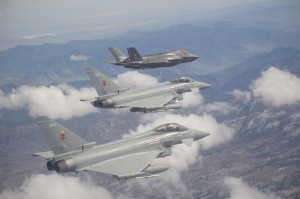
It is a pattern in which state and non-state actors are working to reshape the global order in their favor by generating conflicts against the interests of the democracies but which the democracies are slow to react. Insertion forces can provide the tool sets which can act as rapidly as democracies can decide to act but still shape outcomes favorable to the democracies.
Earlier, Ed Timperlake and I argued with regard to the US forces:
The USMC can easily setup a TEMPORARY FOB for 22nd MEU with their MV-22s somewhere in Kurdistan to conduct missions into Iraq proper to rescue Christians and eliminate any ISIS fanatics in the way in the process and then leave. USS Bush CBG could provide a real combat punch when ISIS mass their forces-or SOCOM/CIA identifies isolated groups. Just like they could have secured the crash site in Ukraine.
This is not about long term occupation and training; this is about ready now USMC sea based tiltrotar MV-22 assault forces coming to the aid of the Kurds and Christians, and setting up a forward operating base that can influence events in the Nineveh plain, helping move threatened minorities to Kurdish protection, all the while working with SOF in country, and then returning aboard ship.
The U.S. has insertion forces able to engage and withdraw, rather than setting up long-term facilities and providing advisers as targets. The ability to establish air dominance to empower multi-mission USMC insertion force able to operate effectively, rapidly and withdraw is a core effort that now exists in US way of war for emerging 21st century conflicts
The classic dichotomy of boots on the ground versus airpower really does not capture the evolving capabilities of either airpower or the evolving capabilities of ground forces capitalizing on those evolving capabilities to provide for more effective and more lethal insertion forces.
The ability to station and supply a Navy Marine Team anywhere around the globe, ready for immediate combat, demonstrates, yet again, why the US Navy Fleets of Carrier Battle Groups and ARG/MEUs are invaluable assets for American military power projection.
Clearly, the UK carrier, the maritime task force and the coming integration of sea and land based air fits into this future.
And both the UK public and decision makers will be given a much wider range of options than they have now without having to deploy forces ashore for long periods of time, unless the interest, the need and the support is available to do so.
The coming of the UK carrier is nothing less than providing for strategic options simply missing from today’s UK defense forces; and it fit into where other allies are moving as well.
For an example of an evolving context within which the carrier could well be engaged see the following:
https://sldinfo.com/crafting-baltic-defense-a-key-role-for-allied-air-and-seapower/


